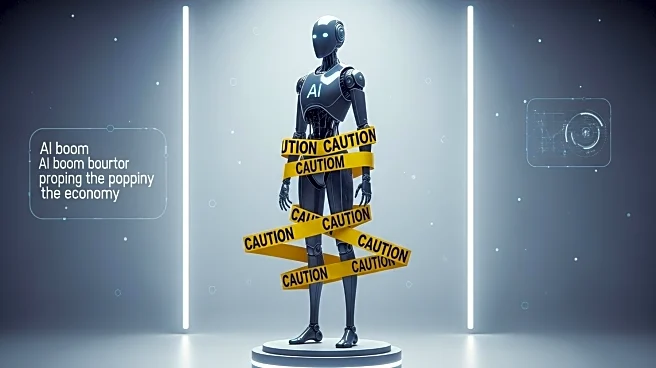What's Happening?
Andrew Ross Sorkin, a renowned financial journalist and founder of the New York Times' DealBook, has issued a stark warning about the current state of the stock market. Sorkin draws parallels between today's
market conditions and those preceding the 1929 crash, suggesting that rampant speculation and excessive debt are creating a precarious situation. He highlights the role of AI investments in inflating market valuations, reminiscent of the margin trading that fueled the 1929 bubble. Sorkin's concerns are compounded by the dismantling of investor protections, which he believes are crucial in preventing a repeat of past financial disasters.
Why It's Important?
The implications of Sorkin's warning are significant for ordinary investors, particularly those with retirement savings in 401(k) accounts. The push to include riskier private investments and cryptocurrencies in these accounts echoes the strategies that led to financial ruin for many during the Great Depression. If Sorkin's predictions hold true, a market crash could disproportionately affect middle-class savers, highlighting the need for vigilance and protective measures. The broader economic impact could be severe, affecting consumer confidence, investment strategies, and potentially leading to a recession.
What's Next?
While the timing and severity of a potential crash remain uncertain, investors and policymakers may need to reassess current strategies and regulations. The debate over opening retirement funds to riskier investments is likely to intensify, with stakeholders weighing the benefits of higher returns against the risks of reduced protections. Financial institutions and regulators may face pressure to implement safeguards that can mitigate the impact of speculative bubbles, particularly in the AI sector.
Beyond the Headlines
Sorkin's warning also raises ethical and cultural questions about the democratization of finance. The narrative of providing broader access to investment opportunities may inadvertently expose less experienced investors to significant risks. This development could lead to a reevaluation of financial literacy and education initiatives, aiming to equip individuals with the knowledge needed to navigate complex investment landscapes.











